Iteration 1 - Pressure Cooker, Biodiversity Game
Iteration 1 spans a timeframe of two weeks, between 31 Augustus 2020 to 11 September 2020.
Orientation ourselves in the field of data collection
The project started off with a pressure cooker. The first brainstorm was about what games for data gathering would entail in our project. This was done via Miro (https://miro.com/app/board/o9J_kmVl2LE=/) It was decided that the game would be a citizen science game, “Citizen science is where volunteers, in collaboration with scientists, get involved in science. This can be collecting and analyzing data, interpreting results, classifying and transcribing information, conducting experiments or by playing citizen science games.” (https://citizensciencegames.com/about/) Benchmarking was done to see what other games were already out there. Big interest was found in a game called QuestaGame, this game would make use of volunteers to discover, map and ultimately help protect life on our planet. (https://questagame.com/)
Miro board, exploration of the link between scientific research and games A Miro baord about how to implement game-like features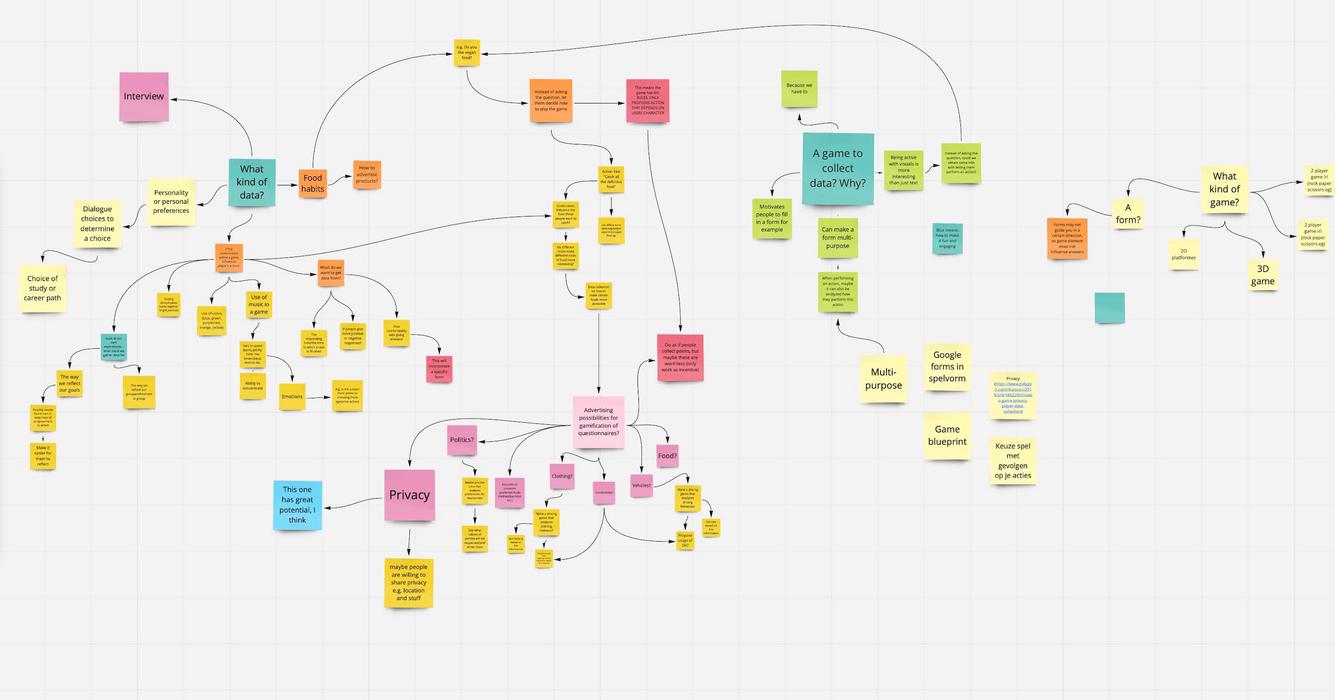
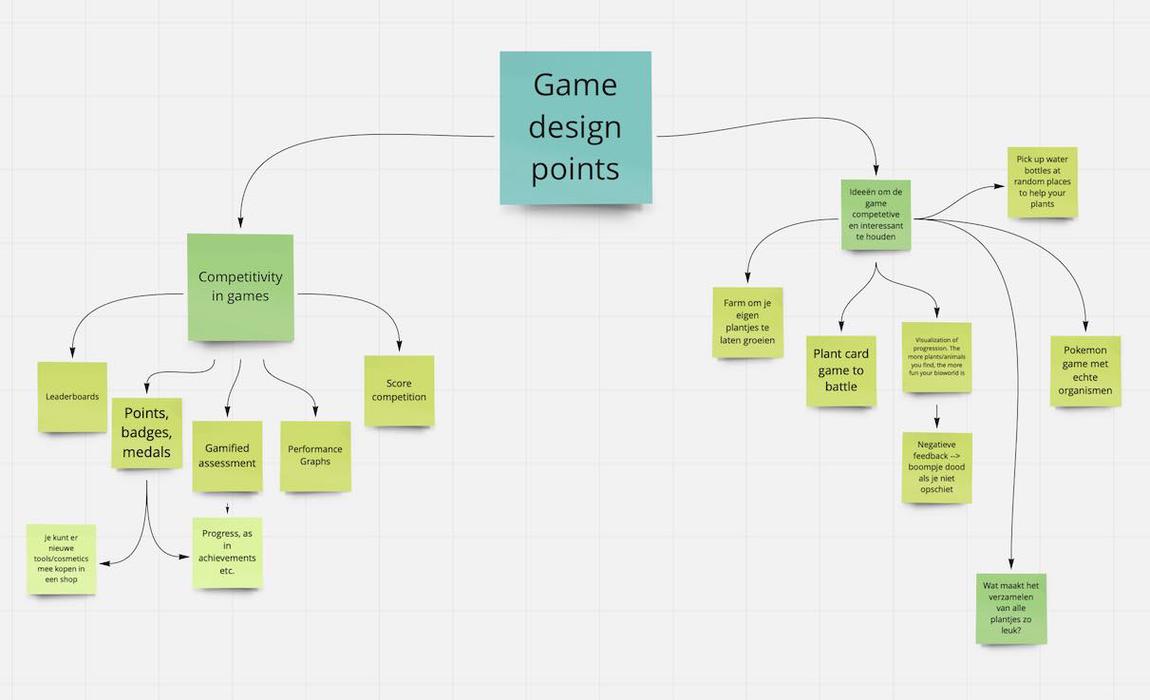
Ideation on a game for mapping out biological life
It was decided to use the concept of using volunteers to map out biological life, however changing the concept a little bit and making it more fun to play to attract a bigger audience. The target group would-be volunteers and children, this was because volunteers would, of course, be willing to play the game and children as they are more playfully orientated, however, for children the game would have to be made with more guidance and motivation in terms of rewarding and engaging gameplay to let them stay on the app. The design question for the pressure cooker was: How can we design a rewarding and engaging citizen science game for biodiversity data collection that also appeals to an audience without scientific interests?
Conceptualization
Our concept was to make a game in which the player collects plants and animals in real life by taking pictures of them. The app turns these into in-game characters which allows users to use those plants and animals in battles against other players to earn badges or other rewards. A big inspiration for these game decisions came from the game Pokemon GO. (https://www.pokemongo.com/en-us/) There was also an idea to have an in-game garden/animal pen to see what kind of plants and animals you already collected. Further research had to be done on what makes games fun, compatible, entertaining to play, and how to keep players playing. Further implementations we thought of were, water bottles you had to pick up to water your plants, to keep stimulating the players to use the app. Our main point of feedback from our coaches was however that we should look outside the scope of solely biodiversity and find out what other parts of the scientific world around data collection were interesting to actually collect data for.
Presentation
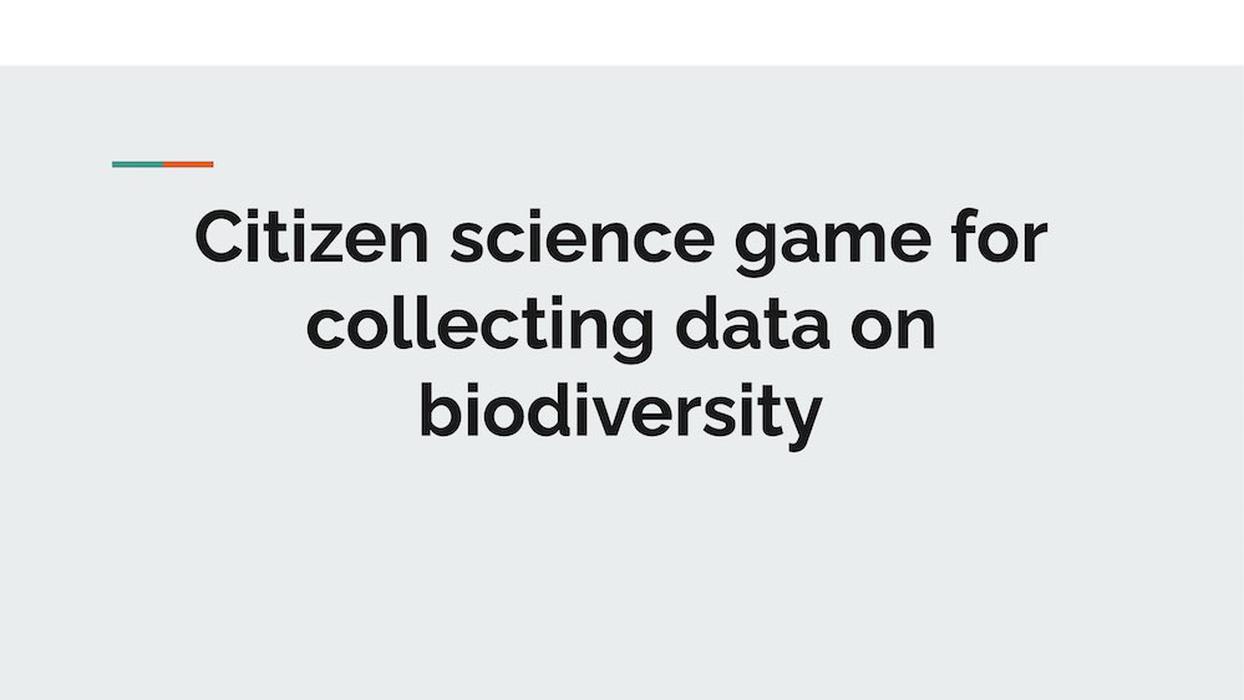
Presentation slide 1
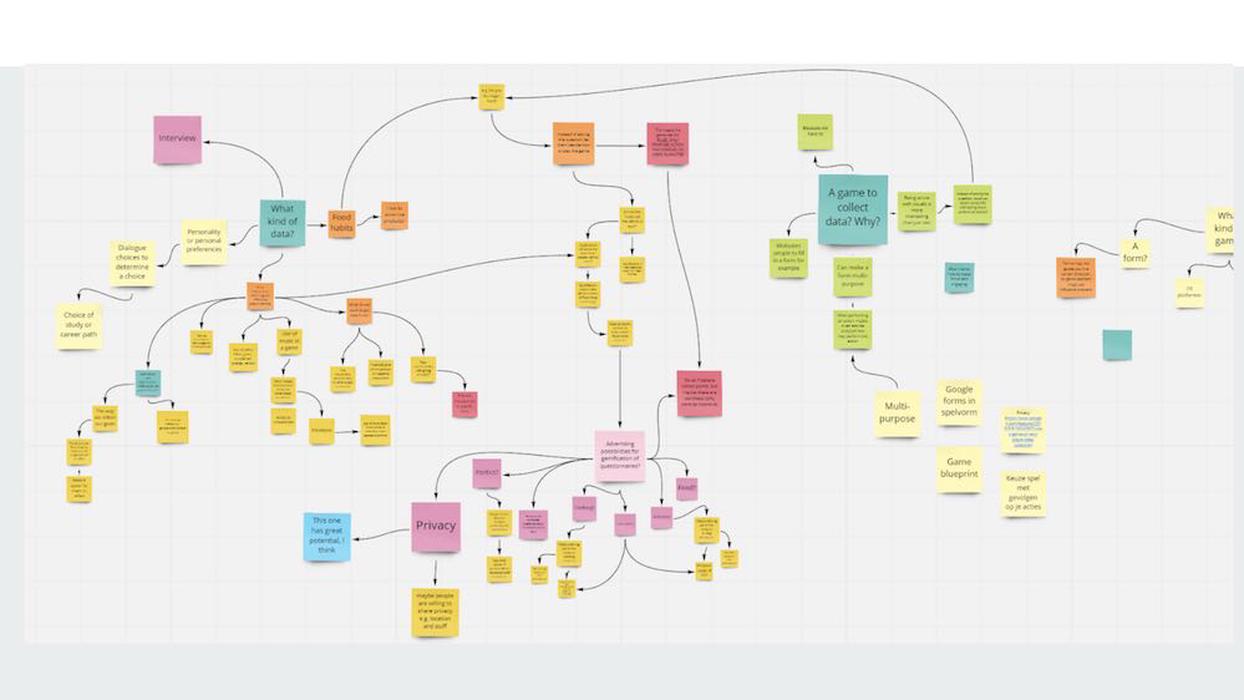
Presentation slide 2 - Miro board
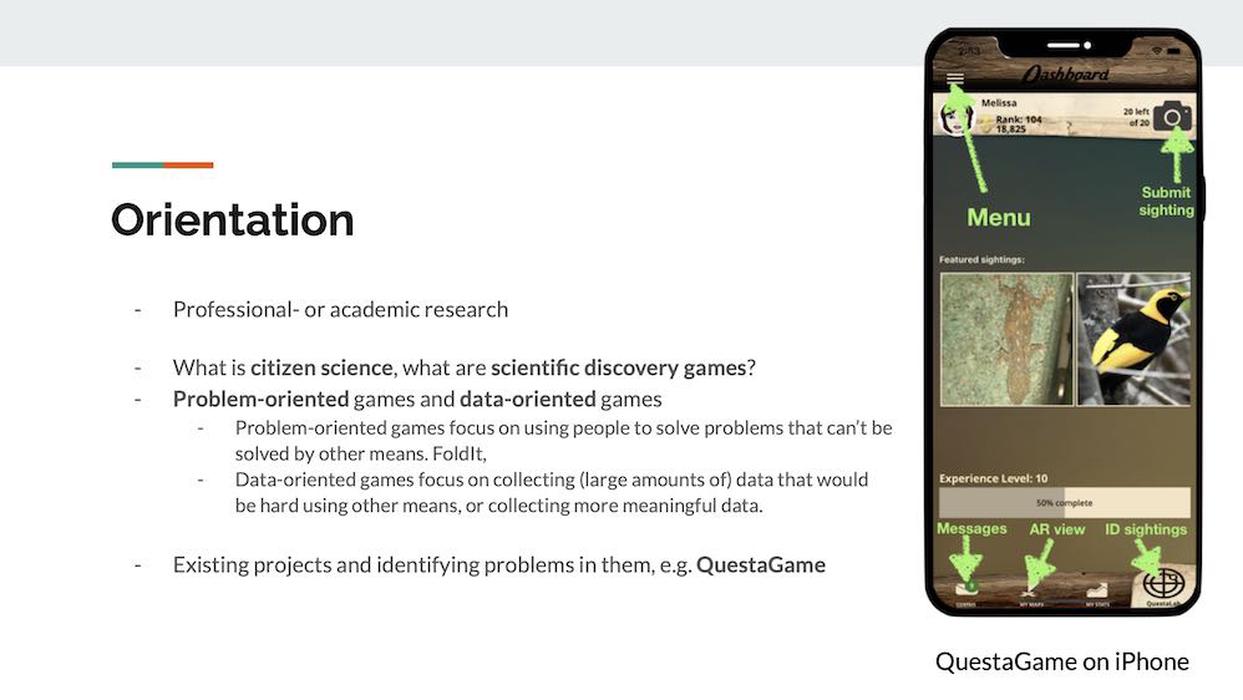
Presentation slide 3 - Orientation
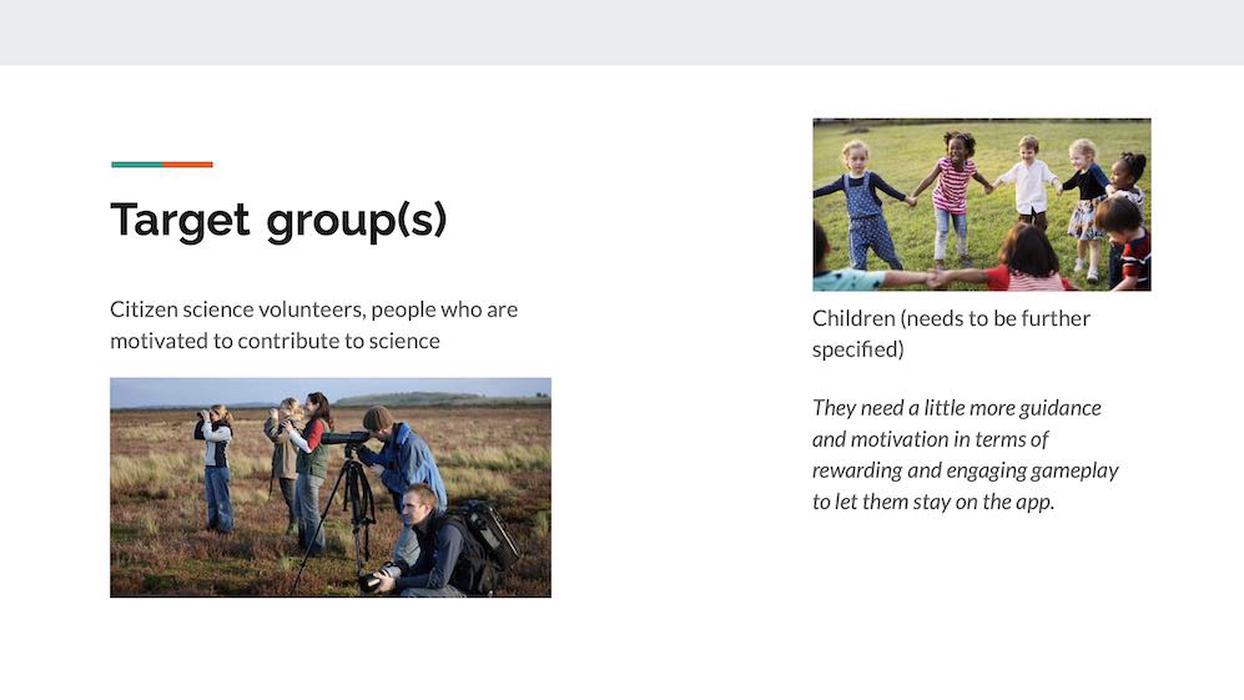
Presentation slide 4 - Target group(s)
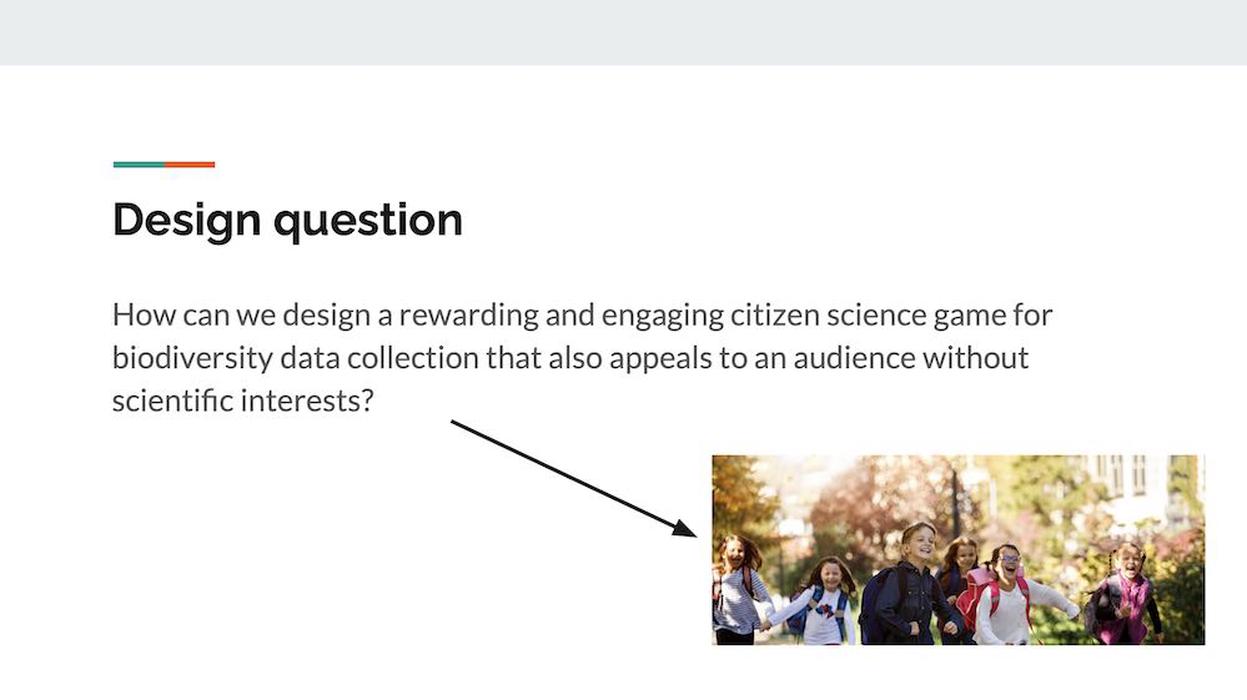
Presentation slide 5 - Design question
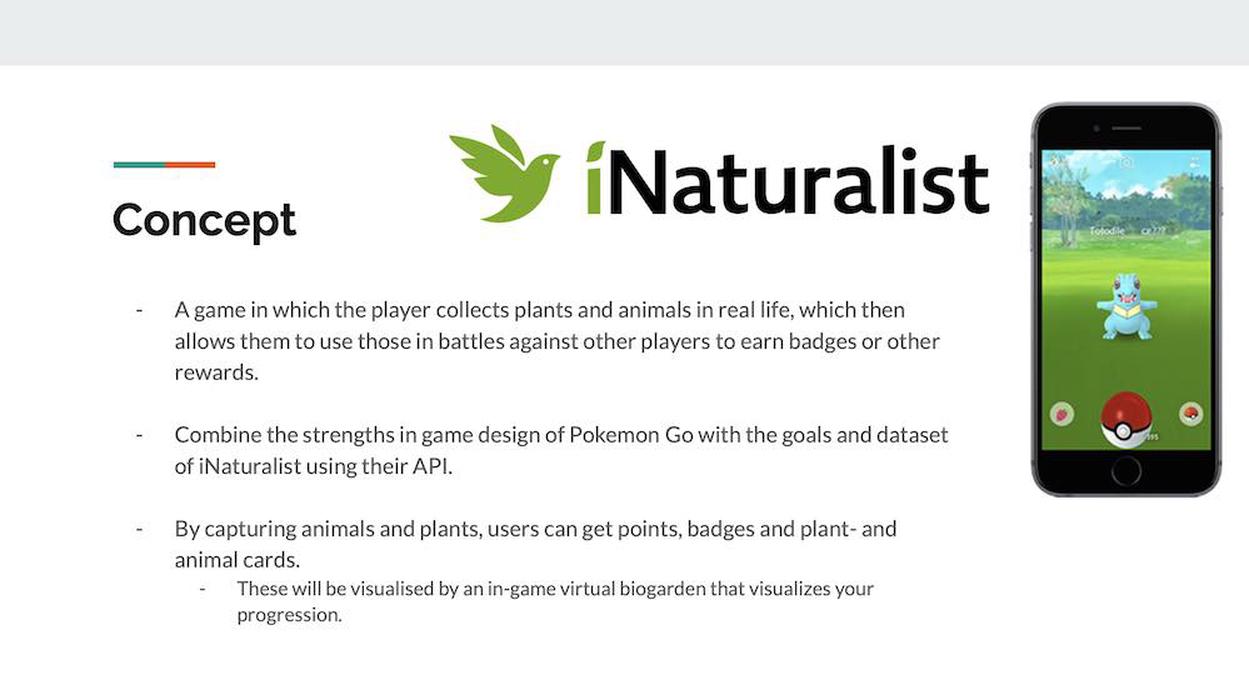
Presentation slide 6 - Concept
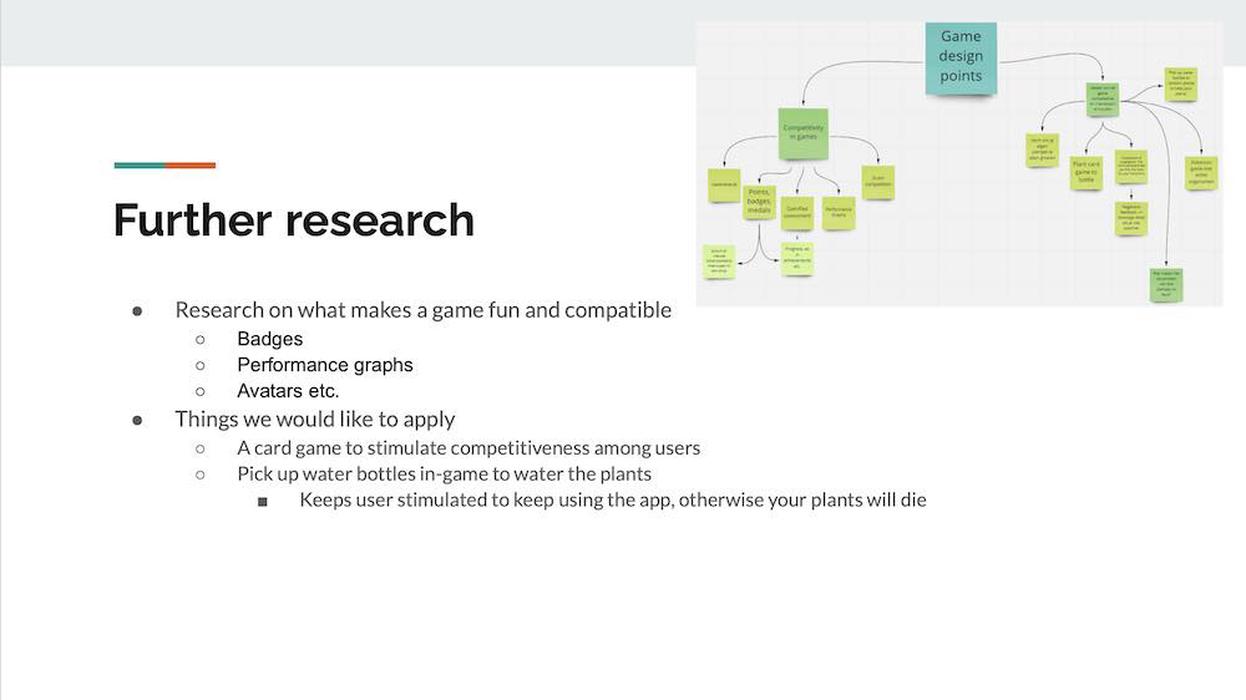
Presentation slide 7 - Further research
